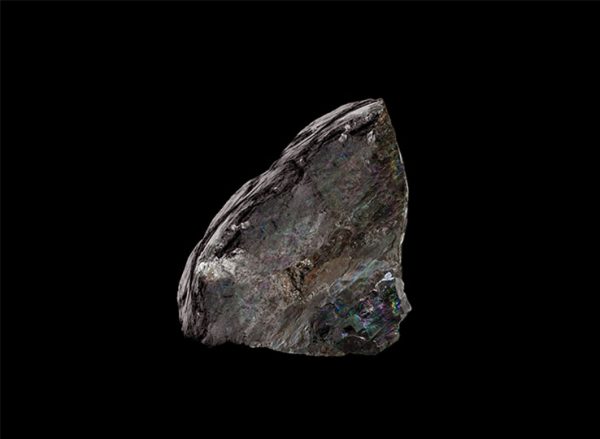Dialogue # 2: Plastic Pollution in the Laurentian Great Lakes: Industry and Invisibility
A program of:
Plastic Heart: Surface All the Way Through
Wednesday October 6, 6pm–7:30pm EDT
Online on Zoom
Watch the recording
How can arts-based thinking and working make viable contributions to plastics pollution research? In this panel, artists engaged critically with plastics join scientists studying plastics pollution. The intent is to exchange research and methods and close knowledge gaps towards generating creative and actionable approaches to tackling plastics pollution as a “wicked” problem. We will examine the effects that collaborative working methods have on both scientific and artistic processes and will discuss shared research outputs such as nurdle sampling, industry mapping, chemical analysis, and material practice.
—
SPEAKERS:
Ian Arturo graduated from Allegheny College, in Meadville, PA with a BS in environmental science in 2014. He received his MSc in Geology (Environment and Sustainability Collaborative) from the University of Western Ontario, in London, ON in 2021. During his time at Western, Ian was a member of Dr. Patricia Corcoran’s lab group and the Synthetic Collective. Ian sampled Lake Michigan for the pan-Great Lakes pellet study, which involved collecting plastic pellets from the strandlines of 66 beaches across the five Laurentian Great Lakes. Ian’s thesis, “Plastic debris in the Laurentian Great Lakes System, North America: Analysis of types, abundances, and sources”, contained work on debris across the Great Lakes and Lake St. Clair. Ian is currently working for WSP USA in the NYC area, working on contaminated site investigations.
Dr. Sara Belontz received her PhD in Geology from the University of Western Ontario investigating the sources, transport, and fate of microplastics in freshwater compartments. Her dissertation reported the spatial and temporal distribution of microplastics in benthic sediment of Lake Huron, North America. Sara has published in various academic journals with the Synthetic Collective, many of which include “Embracing an interdisciplinary approach to plastics pollution awareness and action”, and “A comprehensive investigation of industrial pellets on beaches across the Laurentian Great Lakes and the factors governing their distribution”. Sara is currently working as a post-doctoral researcher at California State University, San Marcos, developing a novel technique using NanoIR instrumentation to identify and classify nano- and microplastics in aqueous solutions.
Tegan Moore is an artist based in Montréal, Canada. Her current work considers molecular entanglements in the built environment and the materials that support it. Recent exhibitions include Foam Fatigue at YYZ Artists Outlet, Immersion Grade, at Vivo Media Arts, and Variations at Zalucky Contemporary. She is a co-organizer of the project space Support, in London, Ontario. As part of the Synthetic Collective, she recently co-authored “A comprehensive investigation of industrial plastic pellets on beaches across the Laurentian Great Lakes and the factors governing their distribution” published in the journal Science of the Total Environment.
Mary Mattingly is a Brooklyn-based artist whose work explores issues of sustainability, climate change, and displacement. Mattingly combines photography, performance, portable architecture, and sculptural ecosystems into poetic visions of adaptation and survival. Mattingly’s work has been exhibited at Storm King, the International Center of Photography, the Seoul Art Center, the Brooklyn Museum, the New York Public Library, deCordova Museum and Sculpture Park, and the Palais de Tokyo.
Alice (Xia) Zhu is a PhD student at the University of Toronto studying the sources, transport, and fate of plastic pollution. Alice is also heavily involved in local and global environmental advocacy efforts related to SDG 13 (Climate Action) and SDG 14 (Life Below Water). She recently spoke at the Museum of Contemporary Arts (MOCA), From the Bay Area to the Arctic: Shezad Dawood and Alice Xia Zhu, and published the article “Plastic is part of the carbon cycle and needs to be included in carbon calculations” in The Conversation in 2021.
Kelly Jazvac (moderator) is a Canadian artist based in Montréal, Canada and a member of the Synthetic Collective. She currently has a solo exhibition at the MacLaren Art Centre (Barrie) and has recently exhibited at The Musée D’Art Contemporain (Montréal), The Museum of Modern Art (New York), Eli and Edyth Broad Museum (East Lansing), Ujazdowski Castle CCA (Warsaw) and FIERMAN Gallery (New York). Her work has been written about in National Geographic, e-flux Journal, Hyperallergic, Art Forum, The New Yorker, Canadian Art Magazine and The Brooklyn Rail. Her co-authored, collaborative art/science research has been published in scientific journals including Nature Reviews, GSA Today, and Science of the Total Environment.
—
Title and Page Image: Mary Mattingly, Core, 2020. Polyacrylonitrile composite fabric (from the coal-based chemical product Acrylonitrile), Iron and carbon (hanging supplies), dispersed dyes (water; and chemicals including formaldehyde condensates of naphthalene sulphonic acid dispersants, polyacrylate thickeners, and sodium hydrosulphite alkali reducing agents). Courtesy of Robert Mann Gallery

